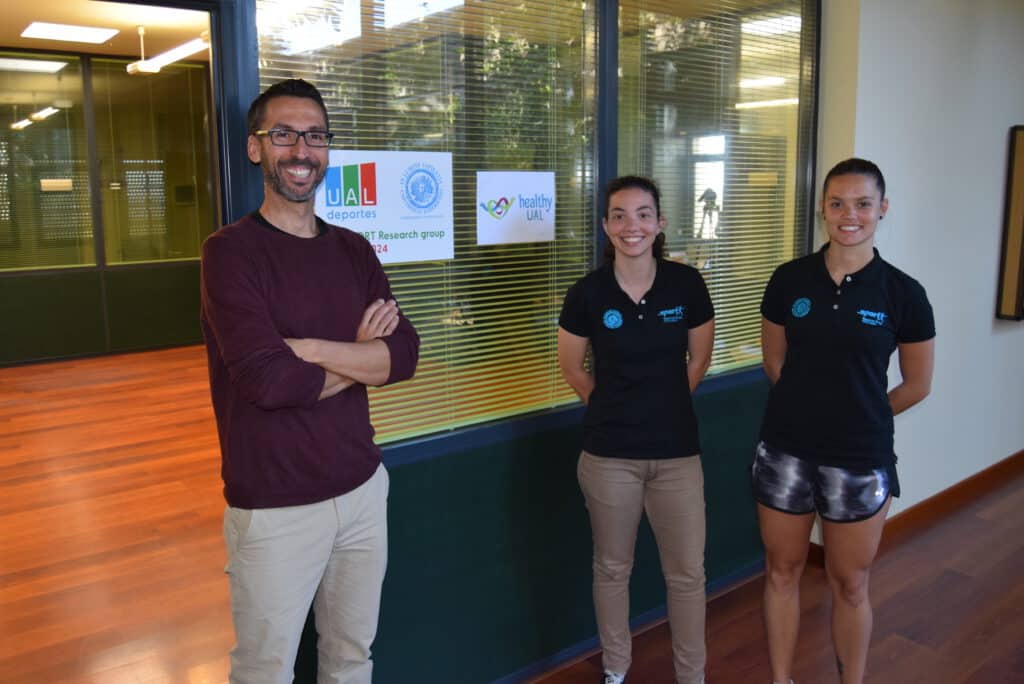Researchers from the University of Almeria have conducted a rigorous study to examine the association of the mechanical variables of vertical and horizontal force-velocity profile and acceleration with change of direction ability in various sports. A total of fifty-four male athletes volunteered to participate in this study.
A team of researchers from the University of Almeria has conducted a study to deepen the factors that determine the change of direction (COD) in athletes who practice soccer, tennis and basketball and has been published in the prestigious journal European Journal of Sport Science (https://www.tandfonline.com/doi/abs/10.1080/17461391.2020.1856934?journalCode=tejs20). The objective is to be able to improve the physical parameters that improve the athletes' performance in COD through individualized training programs.
In recent years, the speed of the game and the number of high intensity actions such as sprints, changes of direction (COD) and jumps performed during the match has increased significantly in soccer (Barnes et al., 2014), basketball (Garcia et al., 2020) and tennis (Fernandez-Fernandez et al., 2009). These actions take place in both attacking and defensive situations (Salaj and Markovic, 2011), where players have to accelerate, decelerate and change speed and direction as quickly as possible. Since improving their performance can be a differential factor in these sports (Brughelli et al., 2008), numerous researches have tried to investigate the most determinant physical abilities, with the aim of maximizing their performance through training.
Essentially, COD maneuvers are determined by the athlete's ability to decelerate and re-accelerate quickly, which requires a large application of force. Thus, previous research has found a high association of strength and power values in the squat exercise and sprint times with COD performance, using these results to guide training. However, these tests could provide less detailed and specific information on neuromuscular performance and the ability to apply force in these actions than the evaluation of the individual strength-speed profile of each player.
Therefore, given that jumping, sprinting and COD require similar mechanical demands (applying force as fast as possible to accelerate one's body), assessing the force-velocity profile during vertical jumping and sprinting could help to better understand the mechanical and muscular variables that determine COD in order to optimize training prescription in soccer, tennis and basketball.
The objective of the study conducted by Andrés Baena-Raya, Alberto Soriano-Maldonado, Filipe Conceição, Pedro Jiménez-Reyes and Manuel A. Rodríguez-Pérez, was to evaluate the association of mechanical variables derived from the force-velocity profile with DOC performance in different sports.
For this purpose, a study was carried out with 54 male athletes whose strength-velocity profile was evaluated during jumping and linear sprinting. The COD was evaluated with the 505 test.
The main findings of this study indicate that the variables of the horizontal profile are more associated with performance in the C.O.D. than the strength parameters in the vertical vector. Therefore, if the goal is to improve COD performance and optimize evaluation procedures, coaches and evaluators are advised to focus their analysis on the horizontal force-velocity profile. Second, it was observed that horizontal force (F0) and peak power (Pmax) were the sprint mechanical variables most associated with COD. To estimate the possible effect that an improvement in these variables could have on COD performance, a linear regression analysis was performed where it was estimated that an increase in sprint F0 and Pmax would be associated with a 0.15 s and 0.04 s reduction in the COD test. Therefore, from a practical point of view, the use of exercises that emphasize the improvement of horizontal force application and Pmax during sprinting is recommended, such as, for example, resisted sprints with heavy drags.
The results of this study put into perspective the usefulness of assessing the horizontal force-velocity profile to program training in an individualized way, with the aim of improving acceleration and performance in COD in soccer, tennis and basketball.



